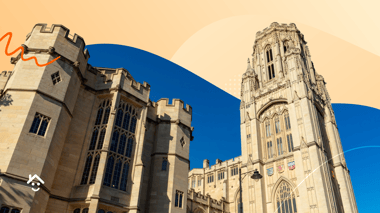Across the world, around October and November time, houses will be lit up with candles, people lit up sharing joy, and special food and decorations will be being created. This is because at this time of year, many cultures and religions share in the celebration of Diwali.
Diwali as I would celebrate it, stems from the Hindu origin, but it is not only a Hindu festival. Sikhs and Jains also celebrate Diwali, as well as some Bhuddists , and so I have also tried to learn more about Diwali’s other origins and what it means to the many who celebrate it.
So What is Diwali?
Known as the Festival of Light, Diwali is celebrated over 5 days of festivals during October or November time. Diwali changes date every year because it is dictated by Samvat lunar calendars not the Gregorian calendar and Diwali itself is always on the new moon of the lunar month Karttik. Diwali itself originates from the Sanskrit ‘Deepwali’ meaning ‘ rows of lighted lamps ’.
For Hindus it is the celebration of Rama and Sita, two deities, returning to Ayodhya after 14 years exile and is exactly 20 days after they defeated the demon Ravan. Residents of Ayodyha celebrated the return of Rama and victory of good over evil (Rama over Ravan) by lighting lamps all over their city.
For those who worship the goddess Kali, Diwali signifies the first day goddess Kali rested after defeating the Demon Mahishasur. After vanquishing the demon, goddess Kali danced for two lunar cycles, and then rested on the day that became Diwali.
In Sikh tradition, the day lines up with the end of Guru Hargobind’s captivity in Gwalior and their return to Amritsar where they were greeted by lit lamps by the residents . Also Diwali in 1577: the founding stone of the Golden Temple Amritsar was laid.
For Jains, Diwali signifies the day their last Tirthanker: Mahavir (who etsablished the religion of Jainism) attained Nirvana. Here, lamps are lit to celebrate Mahavir’s attainment of enlightenment .
How do you celebrate?
Diwali is not only one day, as mentioned, but five, where each day is a festival also in of itself. The first day is known as Dhanteras and is a day of cleaning and worship to Lakshmi . Dhan meaning riches , and Teras means 13, as in the 13th day of the lunar month where this day falls. On this day people will tend to clean and buy kitchen items for good luck . On this day one of Vishnu’s incarnations: Dhanvantari is also worshiped for conveying Ayurveda to humanity which is a system of medicine/ health .
The day before Diwali is known as Chotti Diwali (Chotti meaning little) or Narak Chaudas which is a day of preparations and prayers . It refers to the day the demon Naraksura was slain, and represents removing laziness, and warding off evil .
Diwali then falls on the third day of the celebrations , and is known as Lakshmi Puja where goddess Lakshmi is venerated . This day is the darkest of the month and is commemorated with food and sometimes fireworks , where some Hindu’s believe Lakshmi can be on Earth to bless your house and so in honour, they leave their houses especially cleaned and well lit . On the day of Diwali, traditionally prayers are offered to Lakshmi.
The fourth day is the start of the new financial year. The fifth day is Bhai Dooj which is a celebration of the brother/sister bond. Personally, I send greeting cards to my brothers and cousins on Bhai Dooj.
Traditionally, tea light candles known as Diyas are placed around the house to celebrate, people exchange gifts and sweets . These candles have a much deeper meaning too. They symbolise purity, and since Diwali falls on a new moon day (remember its date is dictated by a lunar calendar, not Gregorian ), they also symbolise the winning of light over darkness . In these Diyas, the oil represents greed, and the cotton is the soul, so lighting the candle and burning the oil gives light: representing the dispelling of ill thought . It is tradition that you get your Diyas (Eathern Lamps) on the full moon day a fortnight before Diwali.
To celebrate Diwali, people create Rangoli patterns to decorate their houses. Rangoli’s are designs made of coloured powder that are carefully placed to make a pattern.
Also a popular way of celebrating is fireworks or sparklers. Personally, as a university student renting student accommodation, I can’t light my own candles because I am not allowed to, and I am not with my family when Diwali happens. I celebrate by lighting up fairy lights and making some traditional foods to eat.
What is traditional food?
Traditional Indian sweets (known as Mithai) can include many delicious foods such as Barfi, Gulab Jamun, Ladoo, Kheer and Halwa. Whilst sweets don’t make up the whole meal, they’re definitely one of the parts I look forward to most. In fact, I do enjoy making them myself too and sharing. Other Indian foods include Puri which are like fried chapati’s, and Sabji which literally means vegetables.




